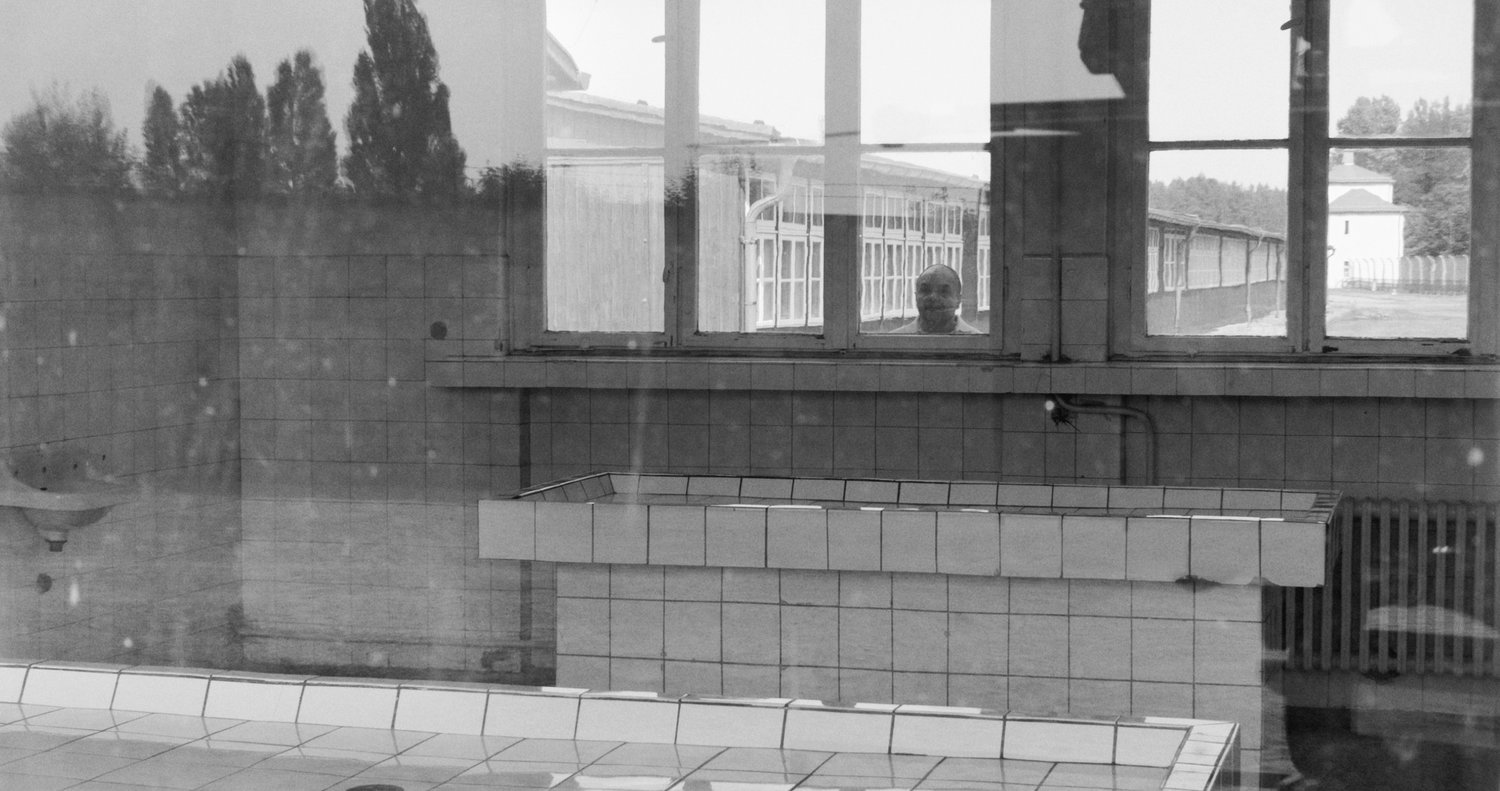Sergei Loznitsa's Austerlitz: Selfies in the Concentration Camp
Austerlitz, Sergei Loznitsa (2016)
Austerlitz, the new documentary by Ukrainian filmmaker Sergei Loznitsa, makes for uneasy viewing. Shot in black and white, the documentary dispenses with commentary, relying instead on diegetic sounds which seem to increase in volume as a static camera refuses to shift its gaze. The camera takes on the role of a quiet, detached observer examining people from a considerable distance; they don’t seem to notice they're being filmed.
Austerlitz examines visitors to the German concentration camp Sachsenhausen, north of Berlin. Yet the film does not explicitly divulge its central theme and the title itself is elusive. Is it a reference to Austerlitz, the small city in Moravia and site of Napoleon's celebrated victory over the Russian and Austrian troops— or to W.G. Sebald's acclaimed final novel about a young man who traces the fate of his Jewish family? To some ears, the name Austerlitz echoes the name of the best-known Nazi death camp, Auschwitz.
The documentary plays with, and continuously frustrates, our expectations. What we witness in the films makes us feel uneasy, even angry, but also ashamed. For what Austerlitz does so extraordinarily well is hold up a mirror to mankind and, in particular, to us as individuals.
Austerlitz, Sergei Loznitsa (2016)
In a series of sometimes painfully long takes, the camera captures people streaming towards the concentration camp site, strolling around the compound, looking at objects, entering and leaving buildings, taking pictures. We never get to see what these visitors actually see. A static camera forces our gaze on these people—we try to glean from their expressions what it is they are looking at, but we learn nothing.
For a considerable length of time the spectator is left in the dark about the film’s location. Only gradually, by piecing together disconnected fragments of information and occasional sound bites, do we understand why the people are there. The name 'Sachsenhausen' is first mentioned half an hour into the film, by a Spanish tourist guide who explains the development of the early Nazi concentration camp to his group. Up to this point, and indeed for much of the remainder of the film, the soundtrack consists entirely of muffled voices, the crunch of gravel underfoot, an occasional shout or laughter, the clicking of a camera. This mixture of sounds becomes more and more disconcerting as we begin to understand that the crowds are visiting a concentration camp.
The film approaches the site of Nazi terror hesitantly, and very slowly. None of this hesitance is evident in the hundreds of people streaming towards a yet undefined destination under the glaring sun of a hot summer day. Like tourists, the people— mostly white, mostly young or middle-aged—are clad in shorts, mini-skirts and t-shirts, equipped with maps, cameras and mobile phones.
A first clue to their location is given when the camera positions itself at the entrance to the memorial site as people enter the wrought-iron gate which brandishes the words 'Arbeit macht Frei.' This precept, literally translated to 'work sets you free,' adorned the entrances of several concentration camps, turning it into a symbol of Nazi inhumanity. Its appearance reveals the seemingly ordinary tourists to be visitors to a concentration camp, and in so doing immediately changes our attitude towards them. The loud slogans on their t-shirts, their mobile ring tones, the details of their behavior all suddenly produce a feeling of discomfort as our gaze becomes more critical. Some smile for pictures in front of the furnaces where bodies were cremated; others jokingly pretend to be tied to the execution poles. A middle-aged couple chomp through sandwiches while entering the camp's prison.
Austerlitz, Sergei Loznitsa (2016)
The camera remains static, aloof. It simply observes—sometimes from a considerable distance or through a window, sometimes positioned amidst the crowd. Apart from the iconic watchtower and high wire fence in the background, glimpsed buildings and rooms give no indication of their purpose. They acquire meaning only indirectly, through the explanations of tour guides leading groups from different countries through the site.
The camera focuses entirely on the visitors, deliberately avoiding the museum's objects in a suggestion that the horrors of the place cannot be adequately represented. How can these physical traces communicate the pain and suffering of those who were imprisoned? The visitors, at least, appear unmoved, their attention fleeting. They skirt from object to object, constantly scanning their surroundings for an interesting photo op.
Only in one prolonged sequence, towards the end of the film, does the filmmaker show a different kind of visitor. Moving closer, the camera reveals people inside a building who look intently at an object or text in front of them. A near complete silence has filled the room; the people do not speak to each other, but read with concentration, or stand still, contemplating. It is a scene of quiet reflection.
Austerlitz, Sergei Loznitsa (2016)




